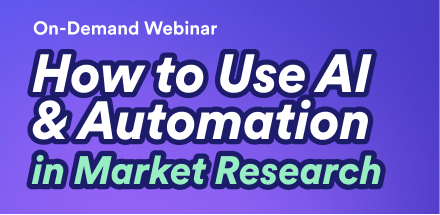User actions are at the heart of onboarding for two reasons. Firstly, your onboarding process needs to show your users how to be successful in your app. This necessarily involves guiding them to the key moments that provide value and delight. On the other hand, one way to think about the success of your onboarding process is to consider which users who sign up are getting to each of the key steps. If people are only making it half-way through the main workflow in your app, then it’s not surprising if they don’t convert to become paying customers. They haven’t seen the value. Or, you’ve made it too hard for them to see the value. It’s worth taking the time to define key moments, and measure which people are hitting those moments. Then you can begin to understand what’s holding them back from success. This can inform the improvement of your onboarding, and it could also inform the improvement of the software itself.
So how do you identify the key actions? It’s a combination of understanding your software design and purpose, and understanding what your users are doing.
Software design
The design of your app provides the foundation for working out the Aha! moments. You designed an app for sharing images, so you know your users need to know how to upload and edit images, connect with their friends, and share their work. You made an app for analyzing data, so you know people need to know how to get their data in, how to set it up, how to do analysis, and how to share their results. Start with some of the basics:
- What did you build it to do for your users?
- Which parts of the workflow in your design are necessary to your user’s success? That is, which parts will cause a user to fail if they get stuck?
- Which elements are optional?
- How many types of workflow are there? Do you need an onboarding process which can target different users with different use-cases?
You probably already know all this stuff. The important part is to make sure you that can reveal the intended workflow elements to your users. This is a great place to start designing your onboarding journey.
Talk to your users
When I first started training customers on how to use our desktop data analysis product, Q, I was not prepared for the kind of reactions I would get. I already knew people were getting great benefit from using Q through my interactions with them in customer support. However, until I stood in a room full of researchers and started taking them through things step-by-step, I never glimpsed the light that went on when people really “got it”. Perhaps most surprisingly, some of the Aha! moments were coming from really simple things. These were things I took for granted as a daily user of the software.
There are many venues that these kinds of interactions can arise from, depending on your business:
- Customer support. Not everyone says “thank you” when you answer a support ticket. However, you can bet that the people who really go out of their way will do so because you have switched a light on. Pay attention. Or, they might just tell you explicitly.
- Surveys. If you’re low on customer interactions, a short, well-crafted survey can be a good source of feedback.
- Meetings, like customer demonstrations or training sessions. You will get a real-time reaction from people when the lights turn on. It usually sounds like “oh, wow!” Just pay attention and write it down when it happens.
Moments of delight can then be incorporated into your onboarding journey.
User testing
In consumer behavior, there is a distinction between “stated preference” (that is, what people are willing to tell you about their behavior and experiences) and “revealed preference”, which is the information people reveal through their actions and choices. If talking to your users is “stated preference”, then “revealed preference” is user testing. While there are many types of user testing, the process basically boils down to making people use your software and watching them while they do it.
User testing involves creating a set of tasks for a user to complete, providing them with some onboarding content, and watching the user navigate their way to try and succeed. Careful observation, or a quick interview at the end of the task, can reveal the places where the user started to feel that they “got it”. Those moments can be incorporated into the onboarding journey.
You can conduct user testing in person, and there are also software tools that can help you. We use lookback.io, which allows you to conduct user testing remotely, and also offers the option of a webcam recording, which can help you detect those moments where things “switch on” for the user.
Get quantitative
If you’re building software in the cloud, then you’re probably measuring what people are clicking on in the app. Such feature usage information can be correlated with an overall measure of the success of a user. This could include things like whether or not they convert, or whether or not they return to your app regularly. Combining these pieces of information can allow you to build a picture (or even a statistical model if you’re cleverer than me!) which captures the differences between those who succeed and those who don’t.
So remember, your onboarding needs to create a journey for your users which reveals the key actions in your software. These are a combination of the fundamentals, but also of the little things which people find delightful – especially those which you may take for granted as a daily user of your app. The fundamentals mainly come from your design, but the added extras – the Aha! moments – come from talking to your users and understanding their behavior in your software.

